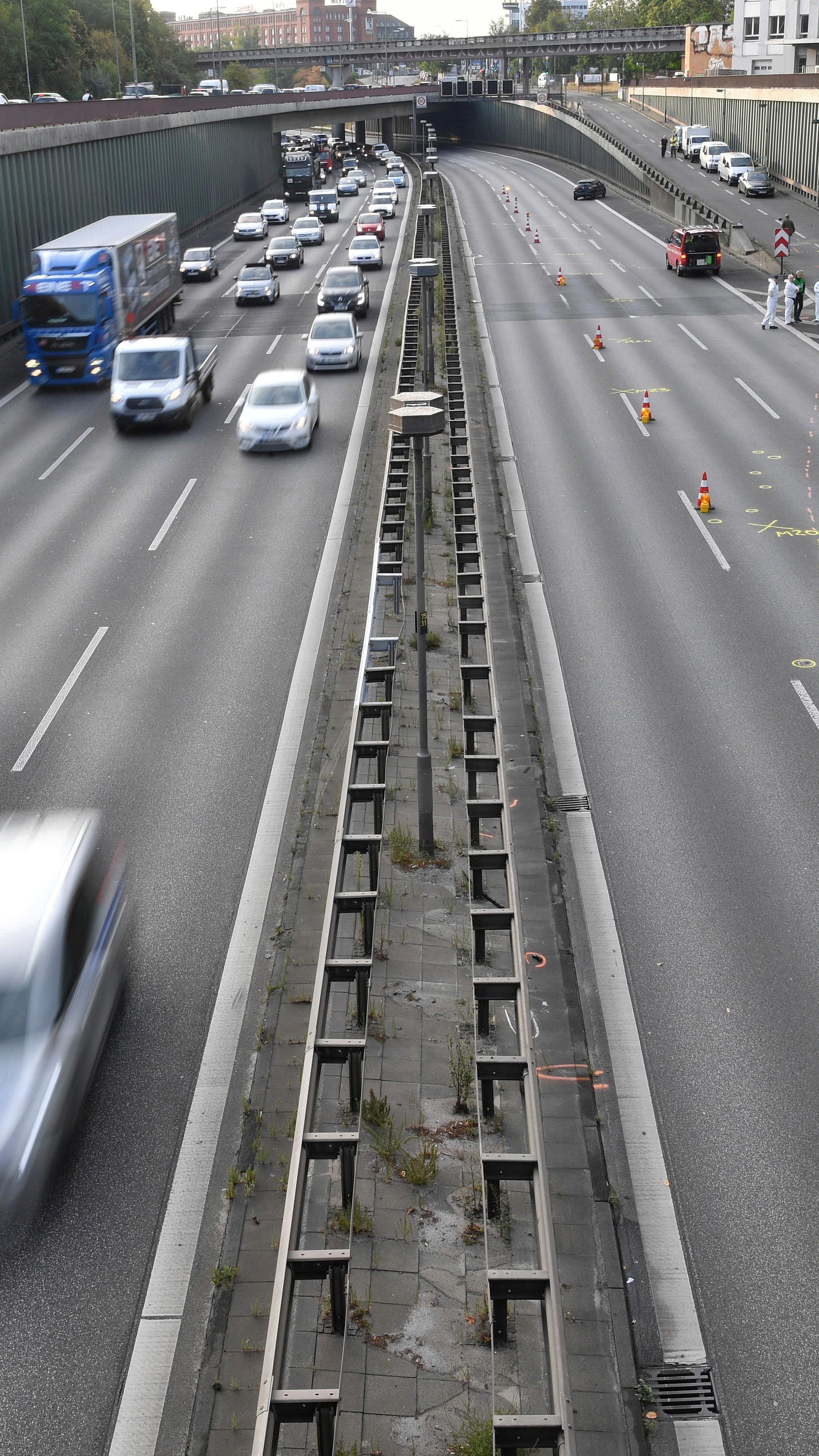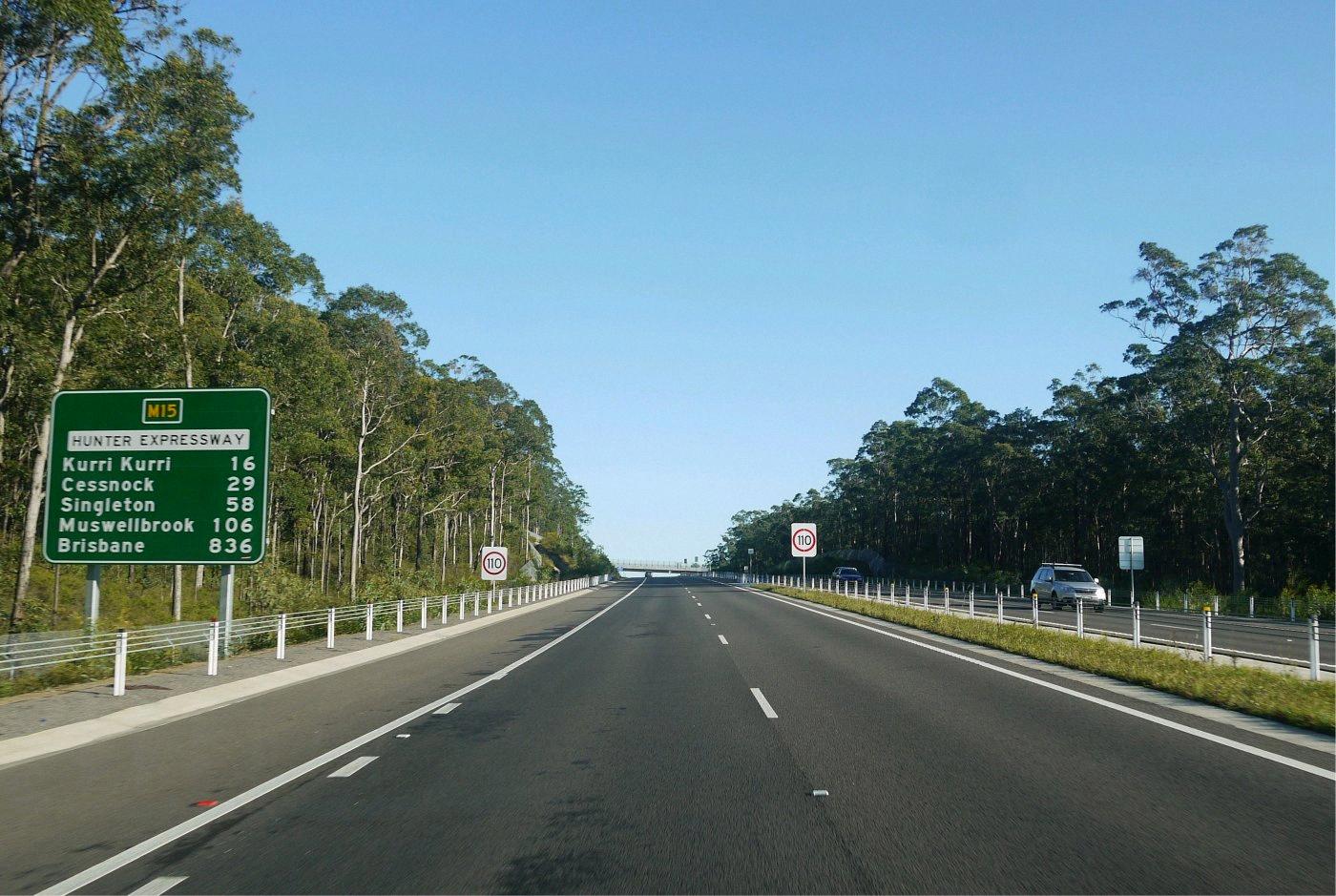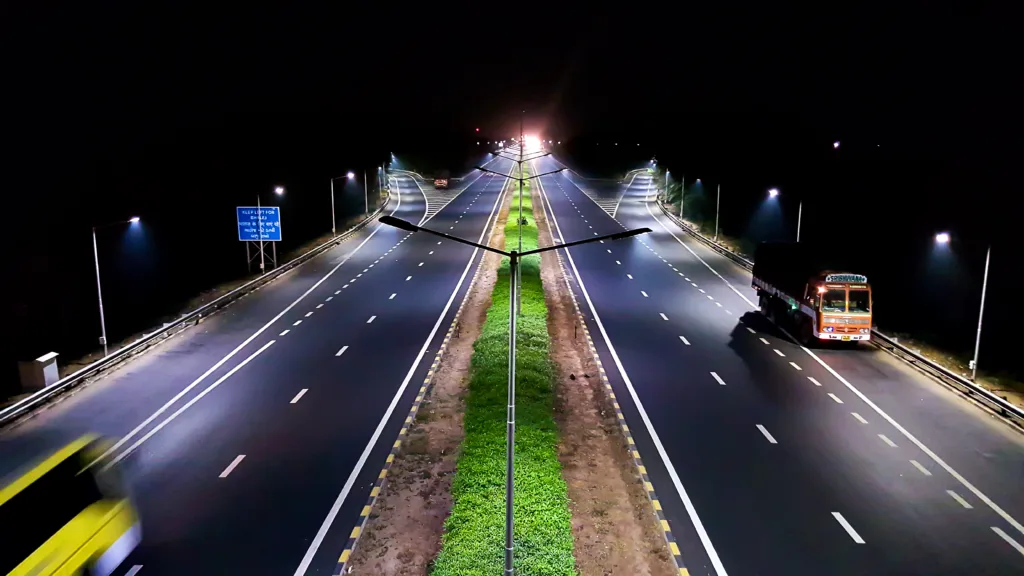Controlled access roadways, also known as expressways, freeways, or motorways, are designed to prvide a safe and efficient transportation system for high-speed vehicular traffic. The term “controlled access” refers to the regulation of traffic flow, including ingress and egress, on these roadways. In this blog post, we will explore the reasons why expressways are known as controlled access roadways.
One of the main features of controlled access roadways is the absence of at-grade crossings. Unlike local roads, which have intersections and traffic lights, expressways have overpasses and underpasses that allow traffic to flow smoothly without interruption. This means that traffic on an expressway can move at high speeds without the need to slow down or stop for cross traffic.
Another important aspect of controlled access roadways is the limited number of access points. Unlike local roads, which have many entry and exit points, expressways have designated entrance and exit ramps that are carefully designed to minimize traffic congestion and ensure safe and efficient traffic flow. This means that drivers on an expressway have fewer opportunities to join or leave the roadway, which helps to reduce the risk of accidents and improve overall safety.
In addition to these features, controlled access roadways are also designed with specific speed limits, lane widths, and other safety features. For example, expressways often have multiple lanes in each direction, with dedicated lanes for passing and slower traffic. They may also have barriers or medians that separate opposing lanes of traffic, as well as signs and signals that provide clear guidance to drivers.
The term “controlled access roadway” is used to describe expressways and other high-speed roadways because they are carefully designed and regulated to ensure safe and efficient traffic flow. By minimizing the number of access points and eliminating at-grade crossings, these roadways provide a safe and reliable transportation system for drivers who need to get from one place to another quickly and efficiently.
Example of a Controlled Access Road
One example of a controlled-access road is the Interstate Highway System in the United States. This system consists of highways that have limited access points, with entrances and exits only at designated interchanges. Interchanges are typically located at major intersections or where other highways intersect the main route. The highways are designed to alow for high-speed travel and are typically separated from other roads by barriers or medians. Other examples of controlled-access roads include motorways in the United Kingdom, freeways in Australia and expressways in Asia. These roads are typically designed to provide efficient and safe travel for large volumes of traffic, with minimal interruptions from local traffic or pedestrians.

Source: dayton247now.com
Controlled Access of the Interstate Highway System
When we say that the interstate highway system has controlled access, it means that the highways are designed to have limited entry and exit points for vehicles. These entry and exit points are typically accessed through on-ramps and off-ramps. This is done to ensure that the flow of traffic remains unobstructed and uninterrupted, and to prevent accidents that can occur at intersections. Additionally, the controlled access design helps to maintain high speeds on the highways, as there are no intersections or stop signs that wuld slow down traffic. This makes the interstate highway system a more efficient and safer means of transportation for motorists.
What is a Non-Controlled Access Highway?
A non-controlled access highway is a type of road or highway that does not have fully-controlled access. Unlike controlled-access highways, such as freeways or expressways, non-controlled access highways may have traffic lights, intersections, and driveways where traffic is able to enter or leave the highway. This means that drivers must exercise caution and be alert for oter vehicles or pedestrians entering or exiting the highway at any point. Non-controlled access highways are typically found in urban or suburban areas, and may have lower speed limits than controlled-access highways due to the increased potential for conflicts with other vehicles or pedestrians.
The Definition of a Limited Access Expressway
A limited access expressway is a type of highway that is designed to provide high-speed, uninterrupted travel between destinations. These roads are typically built with multiple lanes in each direction, and they are designed to allow traffic to move freely without any intersections. The term “limited access” refers to the fact that there are only a limited number of access points to the road, such as on and off ramps, which are controlled by traffic signals or other mechanisms. This design helps to reduce congestion and improve safety by minimizing the number of potential conflict points on the road. Limited access expressways are oftn used for long-distance travel and are commonly referred to as interstates, freeways, or tollways.
Controlled Access: Definition and Purpose
A controlled access is a type of highway designed for safety and efficiency. It is characterized by the fact that the property owners adjacent to the highway do not have the rght to access the highway directly. Instead, the access points to the highway are determined and controlled by the department responsible for the highway’s maintenance and operation. This means that all entrances and exits to the highway are carefully planned and regulated to ensure that traffic flows smoothly and safely. The purpose of a controlled access highway is to minimize the potential for accidents and traffic congestion, and to provide a faster and more efficient means of transportation for motorists.

Difference Between Expressway and Highway
Expressway and highway are two terms oten used interchangeably, but they have some differences. A highway is a road that connects important cities or towns and usually has four or more lanes to provide high-speed traffic. It may have intersections, traffic lights, and pedestrian crossings. In contrast, an expressway is a high-speed road designed to move traffic quickly and efficiently, with limited access and no intersections. It typically has multiple lanes, access ramps, lane dividers, and other features to separate traffic and increase safety. Unlike a highway, an expressway is designed for high-speed travel and has few or no stops, making it a faster and more convenient way to travel between destinations. the main difference between an expressway and a highway is that an expressway is a high-speed road with limited access and designed for faster travel, while a highway is a road that connects important cities or towns and may have more stops and intersections.
Understanding Access Control Highway in India
In India, an access control highway is a type of roadway designed for high-speed travel with controlled entrance and exit points. These highways are also known as expressways or freeways, and they are typically designed with limited access points to ensure that vehicles can travel at a minimum speed of 120 km/hr.
Access to these highways is controlled by using ramps, interchanges, or trumphet, which are specially designed features that allow vehicles to enter or exit the highway safely and efficiently. Unlike conventional highways, where vehicles can enter and exit at any point along the road, access control highways have designated access points that are carefully planned and designed to minimize traffic congestion and ensure safe travel for all motorists.
Access control highways are an important part of India’s transportation network, providing fast, efficient, and safe travel for both commercial and private vehicles. They are typically built to connect major cities and urban centers, and they play a critical role in supporting economic growth and development by enabling the smooth flow of goods and people across the country.
Access control highways are a vital component of India’s infrastructure, providing a critical link between different regions and supporting the movement of people and goods across the country.
The Benefits of Driving on Fully Controlled Access Highways for Low Risk Drivers
Knowing the difference between a fully controlled access highway and a non-controlled access highway can significantly help you become a low-risk driver. A fully controlled access highway is a type of roadway that has limited access points, such as on and off-ramps, and is designed to allow for a high volume of traffic to move quickly and safely. On the other hand, a non-controlled access highway is a type of roadway that has multiple access points, such as driveways or intersections, which can make it more challenging to navigate and can increase the risk of accidents.
By understanding the difference between these two types of highways, you can adjust your driving behavior accordingly. For example, on a fully controlled access highway, you should maintain a consistent speed and stay in the designated lanes to avoid sudden lane changes, which can lead to accidents. Additionally, you should use your turn signals when changing lanes or exiting the highway to ensure that other drivers are aware of your intentions.
On a non-controlled access highway, you should be especially vigilant, as there are liely to be more potential hazards, such as pedestrians or other vehicles entering or exiting the roadway. You should also be prepared to slow down or stop suddenly if necessary, and use extra caution when approaching intersections or driveways.
Understanding the difference between fully controlled access highways and non-controlled access highways is an essential skill for any driver who wants to reduce their risk of accidents and ensure their safety on the road.
Understanding Access Control in Transportation
Access control, in the context of transportation, refers to the management of access points to a roadway system. It is the practice of regulating the entry and exit of vehicles and pedestrians to and from a roadway by controlling the locations and number of interchanges, intersections, driveways, and median openings. This is done to ensure the safe and efficient movement of traffic, reduce congestion, and improve ovrall traffic flow. Access control measures can include physical barriers such as gates, bollards, and fencing, as well as signage, traffic signals, and speed limits. By carefully managing access to a roadway, transportation authorities can enhance safety, reduce the risk of accidents and collisions, and improve the overall experience of drivers and pedestrians alike.

Source: transportationhistory.org
Full Control of Access on an Expressway
An expressway with full control of access is commonly known as a controlled-access highway. This type of highway is designed and constructed specifically to accommodate high-speed vehicular traffic while ensuring controlled access, meaning that only authorized vehicles are allowed to enter or exit the highway at designated points. Controlled-access highways may be referred to by various names, depending on the region or country, such as autobahn, autopista, autoroute, autostrada, freeway, or motorway. These highways typically have multiple lanes, limited access points, and are separated from other roads and pedestrian areas by barriers or fencing.
Definition of an Expressway
An expressway is a type of roadway designed for high-speed through traffic with access partially or fully controlled. It is typically divided in the center to separate opposing traffic flows and may include multiple lanes in each direction. The access points to an expressway are specifically designed to allow for safe merging and exiting with limited disruption to the flow of traffic. These access points may include on and off-ramps, interchanges, and overpasses. Expressways are often used for long-distance travel and are designed to improve traffic flow and reduce congestion on major transportation routes.
Common Problems with Expressway Entrances
One common problem associated with expressway entrances is heavy traffic. This can make it difficult for drivers to merge onto the expressway safely and smoothly. Additionally, expressway entrance ramps often have short acceleration lanes, which can make it challenging for drivers to accelerate to the speed of traffic. High walls or other obstructions may also block a driver’s visibility, making it difficult to see oncoming traffic. traffic on the entrance ramp may slow or stop abruptly, creating a hazard for other drivers. these factors can make navigating an expressway entrance a potentially dangerous experience for drivers.
The Benefits of Using Expressway
The expressway, also known as a highway or freeway, offers several advantages for drivers and passengers alike. Firstly, the high speed limit of the expressway allows for quicker travel times and reduced travel duration. This is especially beneficial for long-distance travelers or those in a hurry. Additionally, expressways have fewer intersections and stoplights, resulting in fewer delays and smoother traffic flow.
Another significant advantage of using the expressway is increased safety. Expressways are typically designed with multiple lanes, wider shoulders, and median barriers, which help prevent collisions and reduce the severity of accidents. Moreover, expressways are patrolled by law enforcement agencies, which helps to deter reckless driving and keep the roadways safe for everyone.
In terms of comfort and convenience, expressways provide a more pleasant driving experience than other types of roads. They are often well-maintained, with smooth surfaces and clear markings, making it easier to navigate and maintain a consistent speed. Additionally, expressways usally have rest areas, gas stations, and other amenities along the way, making it easier for drivers to take breaks, refuel, or grab a snack.
Using the expressway can also result in lower vehicle operating costs. The high speed and smooth surface help to reduce wear and tear on tires, brakes, and suspension systems, resulting in fewer repairs and longer vehicle life. Additionally, the reduced travel time and increased safety can lead to lower fuel consumption and insurance premiums.
The expressway offers several advantages, including high speed, greater safety, comfort and convenience for drivers and passengers, and lower vehicle operating costs.

Understanding Access Only Roads
Access-only roads, also known as access-restricted roads, are streets or roads that have restrictions on motor traffic. These roads are typically designed to provide access to designated areas such as residential neighborhoods, schools, hospitals, parks, or other similar areas. The primary purpose of access-only roads is to prevent through traffic and reduce congestion in specific areas.
Access-only roads are typically marked with signs that indicate the restrictions on motor traffic, and drivers are allowed to use them only for accessing specific locations. Bicycles and pedestrians may have full or partial access to these roads, depending on the local regulations.
Access-only roads are often found in urban areas, where traffic congestion is a significant problem. By limiting the number of vehicles that can pass through a paricular area, access-only roads help to improve safety, reduce noise pollution, and enhance the quality of life for residents in the area.
Access-only roads are streets or roads that are restricted to motor traffic except for access to designated areas. They are designed to reduce congestion, improve safety, and enhance the quality of life in specific areas.
Partially Controlled Access Explained
Partially controlled access refers to a type of highway that is designed to give priority to through traffic, wile still allowing some access to selected public roads and streets. This means that while the highway restricts entry and exit points, it may still have some at-grade intersections and private driveways connected to it. This type of highway is intended to balance the need for fast and efficient travel with the need for local access to surrounding areas. It is important to note that the specific design of a partially controlled access highway may vary based on the plans and regulations of the department responsible for its construction and maintenance.
Conclusion
Controlled access roadways are highways designed to regulate traffic flow and provide high-speed travel for motorists. They are commonly known as freeways, expressways, or motorways, and are typically designed with overpasses and underpasses instead of intersections. These roads are built to reduce congestion, improve safety and provide efficient travel between major cities and towns. Unlike expressways, limited access highways, which include interstates and freeways, have no intersections, making them ideal for high-speed travel. Controlled access roadways play a vital role in modern transportation systems by offering fast, safe, and convenient travel for motorists, and their continued development and maintenance are crucial for the growth and prosperity of communities and economies.
